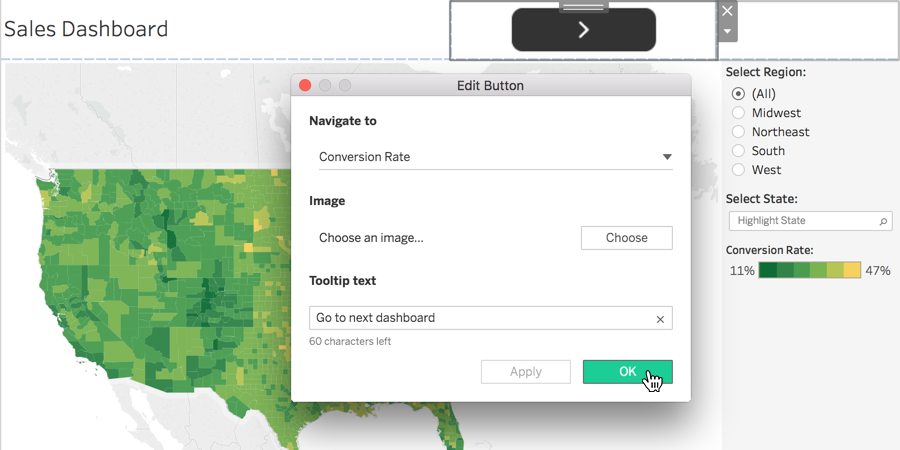Heatmaps, set actions, new dashboard formatting, and more—now available in Tableau 2018.3
Today we are excited to launch Tableau 2018.3. Our latest release includes heatmaps, new dashboarding capabilities, and multiple table storage for extracts. Be sure to upgrade to the latest version of Tableau to take advantage of these new features!
Analytics and dashboarding: heatmaps, set actions, and dashboard buttons
Heatmaps
Create heatmaps with a new density mark type so you can see patterns in overlapping marks. Use this mark type with maps and scatterplots by selecting the density mark type from the marks card. You’ll be able to easily find taxi traffic patterns, concentrations of mobile phone usage, or populations with a high prevalence of heart disease.


Set actions
Viz interactions just got more powerful. With set actions, you can change set members by simply interacting with marks on a viz. It’s a simple but powerful improvement to sets that enables dozens of new use cases like proportional brushing. We’re excited to see the many creative ways our community will use set actions to drive table calculations, reference lines, calculated fields, and custom SQL interactions for anyone consuming a dashboard.

Dashboard buttons
In Tableau 2018.3 you’ll find a new dashboard navigation button. Drag and drop a button from the objects pane when building a dashboard and add seamless navigation to another dashboard, sheet, or story. You can customize the button image, size, and tooltip description as easily as the button’s destination.

Formatting: transparent worksheets
Completely transparent backgrounds give you more flexibility to show off your analysis and branding. Be creative and create a consistent look with transparent filters, highlighters, and parameters - all released with Tableau 2018.2!

Performance: multiple table storage for extracts
When creating an extract, you can now select “multiple tables” to store each table independently in the .hyper extract file, mirroring the structure in the database. Depending on the scenario, multiple table storage can offer smaller extract file sizes, faster extract creation, and potentially faster queries. This new option for extracts can be especially impactful for larger data sets with multiple joins or enforcing row-level security with entitlement tables.

In-release beta: mixed content types
We're bringing a new browsing experience to Tableau Server and Tableau Online. You get more flexibility to organize your dashboards, views and data sources to match the way your teams work. Navigate projects like you would the files on a computer—with workbooks, data sources, and projects within a project displayed together. In the list view, content analytics show which resources are most used. In the tile view, larger cards also boast high-resolution workbook thumbnails and support animated GIFs. A site or server administrator can turn on this new browsing experience on a site-by-site basis.

Welcome: new user notifications for Tableau Online
Enjoy a seamless onboarding experience. There are now automatic site notifications for new single sign-on users in Tableau Online. Administrators no longer need to individually contact new users, as they will receive an email detailing where to sign in, plus tips for using Tableau.
Thank you, Tableau Community!
We can’t do this without you—so thank you for your continued feedback and inspiration. Check out the Ideas forum in the community to see all of the features that have been incorporated thanks to your voices.
We’d also like to extend thanks to the many testers who tried out Tableau 2018.3 in beta. We appreciate your time and energy to help make this release successful.
Get the newest version of Tableau today, and if you’d like to be involved in future beta programs, please sign up to participate!









